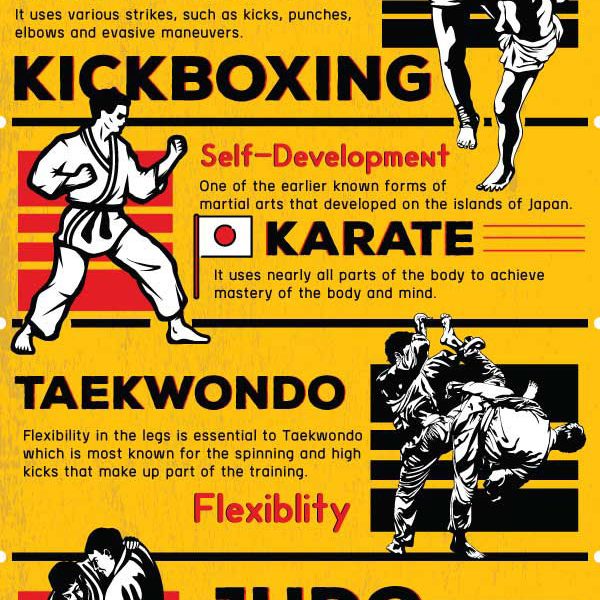Come Explore The Captivating World Of Martial Arts, Where Old Practices Satisfy Contemporary Performance - A Trip Into History And Approach Awaits.
Come Explore The Captivating World Of Martial Arts, Where Old Practices Satisfy Contemporary Performance - A Trip Into History And Approach Awaits.
Blog Article
Content Develop By-Barber Francis
Step into the old globe where martial arts were born out of necessity in diverse regions. Societies crafted distinct battling designs linked with historic contexts. Methods advanced over centuries with devoted method and cultural exchanges. Today, contemporary martial arts mix traditional components for optimal effectiveness. Philosophically, martial arts emphasize technique, self-improvement, and harmony. Respect, humbleness, and equilibrium are fundamental principles guiding experts towards development and strength. Discover the midsts of this abundant history and ideology to uncover the profound influences forming this enduring technique.
Origins of Fighting Style
Fighting style came from various regions worldwide, evolving as useful battle systems to defend against risks. These ancient combating designs were developed out of requirement, with each culture crafting techniques matched to their unique environments and challenges. From the grappling arts of Jujutsu in Japan to the striking techniques of Martial art in China, martial arts were deeply intertwined with the historic, social, and cultural material of their particular societies.
In Japan, the samurai class polished martial arts like Kenjutsu, the art of the sword, which later progressed right into the more popularized kind of Kendo. At the same time, in Brazil, Capoeira emerged as a mix of dance and fight, developed by enslaved Africans as a means to withstand fascism. Each martial art carries with it an abundant background and approach, showing the worths and beliefs of individuals who practiced them.
As you explore the origins of martial arts, you reveal a tapestry of human resourcefulness, strength, and the stubborn spirit of warriors throughout time.
Development of Strategies
Through centuries of method and refinement, battle strategies within numerous martial arts have undergone an extensive evolution. From ancient designs like Martial art and Karate to more contemporary disciplines such as Brazilian Jiu-Jitsu and Krav Maga, the evolution of methods has actually been driven by a mix of social impacts, practical applications, and technological developments.
One significant element of this advancement is the cross-pollination of methods between different martial arts. As an example, methods from conventional Japanese Jiu-Jitsu were included into the development of Judo by Jigoro Kano in the late 19th century. This blending of styles has resulted in the growth of hybrid martial arts like Mixed Martial Arts (MIXED MARTIAL ARTS), which incorporate aspects of striking, grappling, and entry strategies.
Moreover, the development of techniques has been formed by the boosting focus on effectiveness and efficiency in battle. Specialists have actually continuously looked for to improve their strategies via rigorous training, trial and error, and competition, resulting in the development of highly specialized and efficient fighting designs. On the whole, the evolution of techniques in martial arts shows the dynamic nature of battle and the recurring quest for improvement and innovation.
Thoughtful Foundations
Exploring the underlying philosophical concepts of martial arts offers insight right into their core values and leading beliefs. At the heart of lots of martial arts techniques is the concept of self-control itself. By training your mind and body to function as one natural unit, you grow discipline that extends past the dojo or gym right into day-to-day life. https://www.postbulletin.com/business/stock-martial-arts-settles-in-as-rochesters-newest-martial-arts-place-in-hillcrest -control includes regard, humbleness, and self-constraint, forming not just your physical capacities but additionally your personality.
One more essential philosophical foundation in martial arts is the idea of constant self-improvement. The trip of understanding a martial art is nonstop, with experts frequently striving to far better themselves, both literally and mentally. This concentrate on development fosters durability, perseverance, and a development frame of mind that can be applied to all facets of life.
Additionally, martial arts emphasize the relevance of harmony and equilibrium. Strategies are made to use an opponent's energy versus them, highlighting the concept of generating and rerouting pressure instead of meeting it head-on. This philosophy extends to social relationships, advertising calm resolutions and good understanding. By accepting these philosophical structures, martial artists not only improve their combat abilities yet likewise grow a way of life centered on personal development, regard, and harmony.
Final thought
In conclusion, the background and approach of martial arts offer an abundant tapestry of practice, discipline, and self-improvement.
Take for martial arts lessons for toddlers of Bruce Lee, who changed martial arts by mixing various designs and ideologies to produce his very own unique form of Jeet Kune Do.
Through devotion and development, martial musicians remain to push limits and inspire others to reach their full possibility both in fight and in life.
